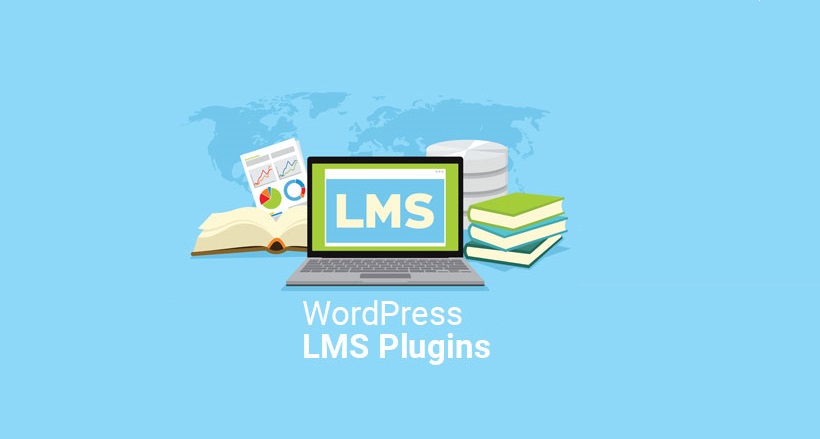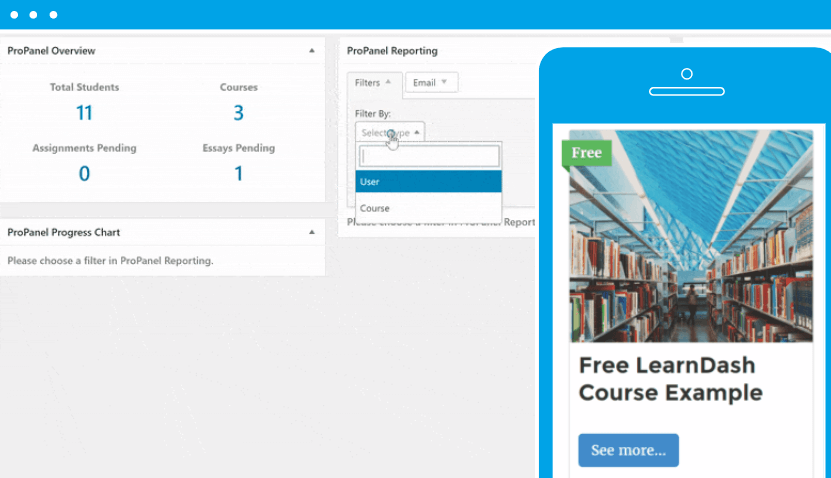
With WordPress, almost any type of website can be developed, including an online learning platform (WordPress LMS). Using the right tools, it is easy to transform the platform into a powerful WordPress learning management system (WordPress LMS), enabling the website owners to provide courses, enroll students, and even make money. With the “right tool”, talking about plugins. There are many WordPress LMS plugins to choose from, most plugins are excellent. The one chosen depends on the features needed and personal goals.
This article will briefly introduce the working principle of LMS. Then introduce how to set up WordPress LMS in three steps.
Introduction to LMS
WordPress is a content management system (CMS). In other words, its software is designed to help publish and manage large content libraries, with a focus on blog posts and articles. On the other hand, LMS is designed to help create online courses and manage them and the students. LMS will:
- Provide users with the tools needed to publish courses that support multiple types of content.
- Ask students to register for a specific course or course.
- It allows for an easy track of the progress of students and evaluates them.
In other words, LMS provides users with the feature needed to fully manage online classrooms. Although there may be specialized tools or software in the digital market, it is relatively fast to build with WordPress and low cost. Let’s explore how it works.
How to create a WordPress LMS (in three steps)
To build an online classroom, check out some WordPress LMS plugins. However, before that, let cover some basic knowledge so that it can be put into use immediately. First, decide what is the purpose of your learning website?
1. Determine the focus of the LMS
Reading this article shows you may already know which topics to focus on in the online classroom. However, you still need to answer questions about the overall goals of the project:
- Educate people for free.
- Offer paid online courses.
Remember, a mixture of the two methods can be used. In fact, it is often meant to provide some content for free on LMS and to keep the privacy of other courses.
2. Plan a structure for WordPress LMS
Once the focus of the website is determined, determine its structure. This means determining which pages, to be included on the site and which courses to publish first. This is a quick breakdown of a basic WordPress LMS website:
- Home page
- Course list (may include price)
- Student recommendation
- About us page
- Student Forum
- Actual course page
The more complex the site structure, the more difficult it will be to implement. So, it’s best to keep it simple from the start, including only the absolutely necessary parts and information. At a minimum, the site needs a homepage, an about us page, and a section where students can browse available courses:
3. Set up WordPress LMS plugin
As mentioned earlier, there are many options when it comes to WordPress LMS plugins. However, here are the best three
LearnDash
First, LearnDash is a plugin that allows the user to design and publish rich media online courses:

With LearnDash, users can access many useful features, such as scheduled content, rewards, registration system, private courses, etc. In addition, the plugin allows user to sell courses, for more advanced e-commerce features, it can also be integrated with WooCommerce.
LearnDash is one of the best options, but it is also expensive (basic licenses start at $ 159 per year).
LearnPress
If LearnDash does not fit your budget, LearnPress is a free (but still good) option:

This plugin includes a convenient drag-and-drop course builder that supports regular courses and quizzes, etc. It can also use it to sell online courses if more advanced features are needed, there are many advanced add-ons available.
LearnPress is the perfect choice for online classrooms. However, if there is no need to perform assignments, provide certificates, handle paid registration, and other tasks, then it’s really “free”. If all these features are to be accessed, this plugin can even be more expensive than LearnDash, because the cost of each additional component is about 30-40 dollars.
LifterLMS
LifterLMS is a mixture of the two plugins(LearnDash & LearnPress):

This version has a free core version on WordPress.org, but it also provides paid add-ons. The WordPress LMS plugin chosen will determine which features can access, so think carefully.





